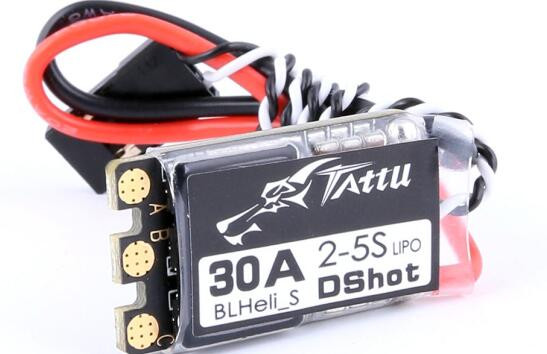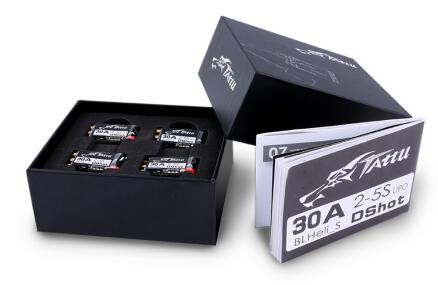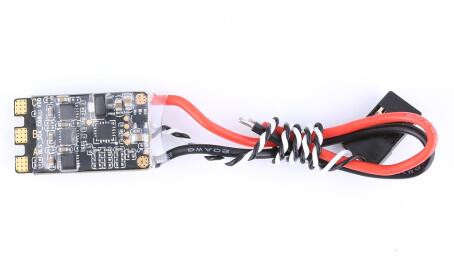Tattu 30A BLHeli_S ESC Review
Jul 19th 2017
Gens Ace and the Tattu brand has a strong reputation in high-performance batteries. Recently, they expanded into speed controllers with the Tattu 30A BLHeli_S ESC, and sent us a set to review.




What's Included
An ESC is a basic component, and often sold in nothing more than a static bag. These Tattu ESCs aim for a higher standard and are supplied in a sleek black box. Inside are the ESCs, of course, as well as a printed manual. This was a nice change from many products we've seen recently that should come with documentation, but don't. You might not think an ESC requires a manual, but it actually provides a lot of useful information on what the startup tones actually mean and what the various settings do.
Electronics
Each ESC appears to be well built with good soldering; components are placed with care and give the ESC a level profile across the top and bottom. Having a level profile prevents extra stress to raised components, which can be especially important in a crash. To connect to the motors, solder pads are provided which can be used from both the top and the bottom of the board. We like solder pads because they're easier to work with than connecting bare wires together and more reliable than bullet connectors. The pads are generously spaced, so accidental bridging is all but impossible. This does leave you with a set of exposed connectors, so it's important to protect them with some kind of sealant, glue, heat shrink, or even electrical tape work fine, if you ever fly in wet conditions. Signal wire and battery leads are soldered on at the factory before shrink wrapping. Lead wires have silicon insulation and are very generous in length. The power leads appear to be 20-gauge, and the signal wires 26-gauge. The signal wire is wrapped with its own separate ground wire—a plus for electrical noise reduction. It's nice that the power leads are pre-tinned and the signal wire is crimped to a servo header, but on today's tight race builds it's likely that both sets of wires will need trimmed down. One feature you won't find is a BEC. Many newer builds use a PDB with a regulator included, and many FC boards, cameras, and VTx parts now connect directly to battery voltage. We built these up on a DYS F4 Pro and the BEC would have just added unnecessary weight.Software
These ESCs run BLHeli_S, which allows easy access to settings through the BLHeli Configurator. According to Tattu, they support regular 1–2ms pulse width input, Oneshot125, Oneshot42, Multshot, DShot150, DShot300 and DShot600; all of which are automatically detected by the ESC at boot. With Betaflight 3.1, setup is easier than ever. I literally soldered these in without regard for which motor wires should go where. I booted BLHeli Configurator and corrected the motor direction where appropriate. After that, I selected DShot600 in Betaflight Configurator, and then it was props on and ready to fly. There's no need to even calibrate with DShot. The choice of BLHeli_S is a little curious for what's aiming to be a high-end product. After all, products with BLHeli_32 are already on the market and support DShot1200—a digital communication protocol that finally beats out the best that analog could offer. These Tattu ESCs top out with Multishot or DShot600. After flying them, though, I challenge anyone to tell the difference in a blind test.
